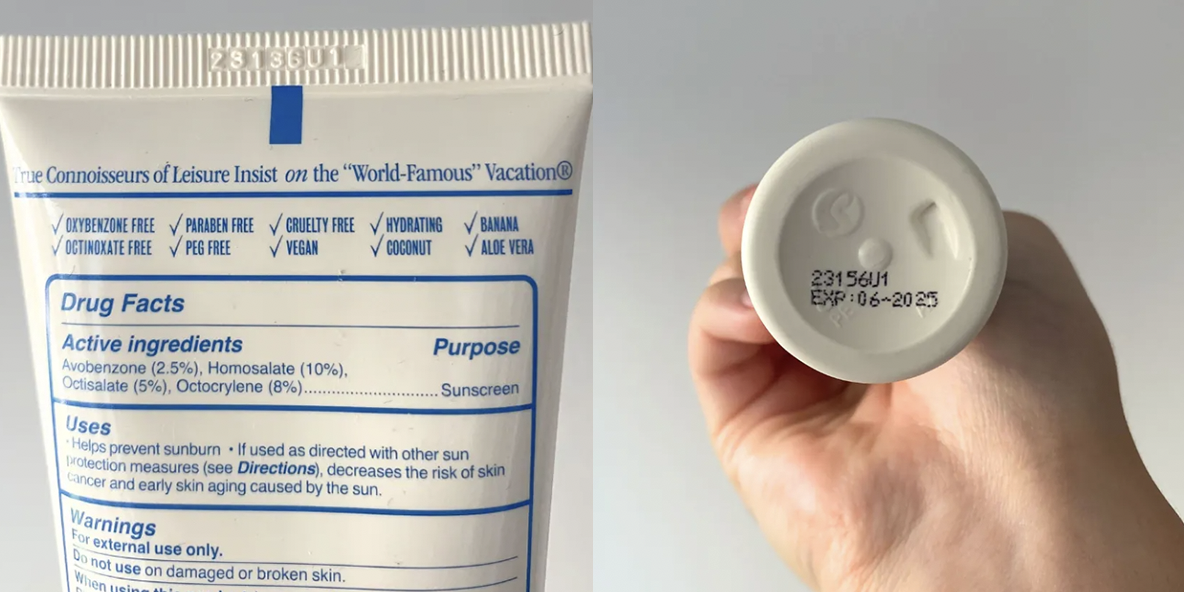Unlike rotten fruits or that suspicious-smelling milk in your fridge, it can be hard to tell when skin care products are past their prime. And with SPF in particular, you definitely don’t want to risk it: Sure, you may not immediately get sick from slathering on expired sunscreen, but you can definitely wind up with a painful burn and bigger problems down the line.
Still, you may be reading this and brushing it off as no biggie to keep using that half-empty bottle sitting in your beach bag. But sunscreen expiration dates aren’t just some marketing ploy to get you to buy more, Kelly Dobos, MSc, MBA, cosmetic chemist and adjunct professor at the University of Cincinnati, tells SELF. “The most important consequence is that you won’t be getting full protection from the sun if your sunscreen has gone bad,” Dobos says (which shields you from harmful UV rays, reducing your risk of developing skin cancer and preventing sunburns and signs of photoaging, including wrinkles and hyperpigmentation). “Plus, other ingredients in skin care and makeup, like certain naturally derived oils, can go rancid over time and irritate the skin or break you out.”
The best rule of thumb, according to the U.S. Food and Drug Administration (FDA), is to consider your SPF expired three years after you bought it—even if there’s no expiration date on the label and even if you’ve never opened it, Dobos adds. And you may want to toss it even sooner if the tube has been left out in the sun all day, for example, or stored in your ultra-hot car because, yep, heat can make sunscreen go bad faster, she says.
READ RELATED: I recently got sober – and have stopped enjoying sex with my husband
So before you reach for that SPF lotion or spray you’ve had for two summers, read on to learn a few ways to tell if it’ll still work its skin-saving magic.
Check the expiration date.
It sounds easy and self-explanatory, right? Some expiration dates are clearly displayed in bold, black ink, yes, but oftentimes, they’re not hiding in plain sight. For example, on sprays, the month, day, and year will likely be stamped on the bottom of the bottle, Dobos says. On tubes, it’s often imprinted at the very top. For some SPF creams and makeup, you might find a tiny icon that looks like an open jar (formally known as the Period After Opening—or POA—symbol) with “9M,” “12M,” “18M,” or “24M” on it. This indicates that the product remains effective 9, 12, 18, or 24 months after opening.


.png)



